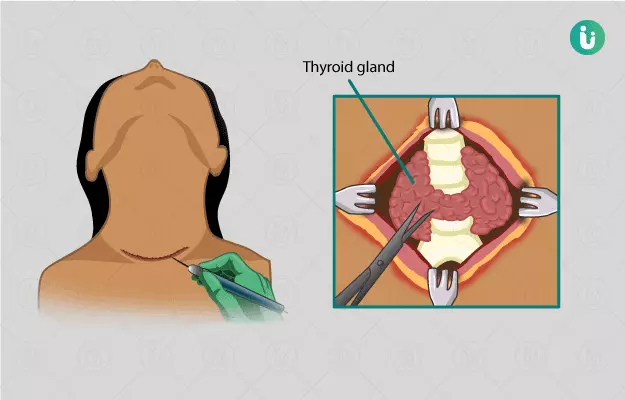Summary
Thyroidectomy is the surgical removal of either a part or all of the thyroid gland. The thyroid gland sits in the lower front of your neck. It releases hormones, which control the rate of metabolism in body.
Thyroidectomy may be done for conditions such as thyroid cancer, goitre (enlarged thyroid) or thyroid nodules (lumps in the thyroid). This surgery is done under general anaesthesia so that you feel no pain and can sleep through the procedure. It may either be performed as a conventional open surgery or through smaller incisions using a viewing instrument called an endoscope.
Typically, a thyroidectomy usually takes about one to two hours. You may be allowed to go home on the same day or a day after surgery. After the surgery, you must take things easy and avoid strenuous activities for the first few weeks.
Although a relatively safe surgery, thyroidectomy is associated with some risks, such as wound infection and changes in voice. If your entire thyroid is removed, the doctor will place you on lifelong thyroid hormone replacement therapy. This may not be required if only a part of your thyroid is removed. A follow-up appointment will be scheduled a week after surgery, where your doctor will check the healing rate of the incision and discuss if you need any further tests or treatment.






































